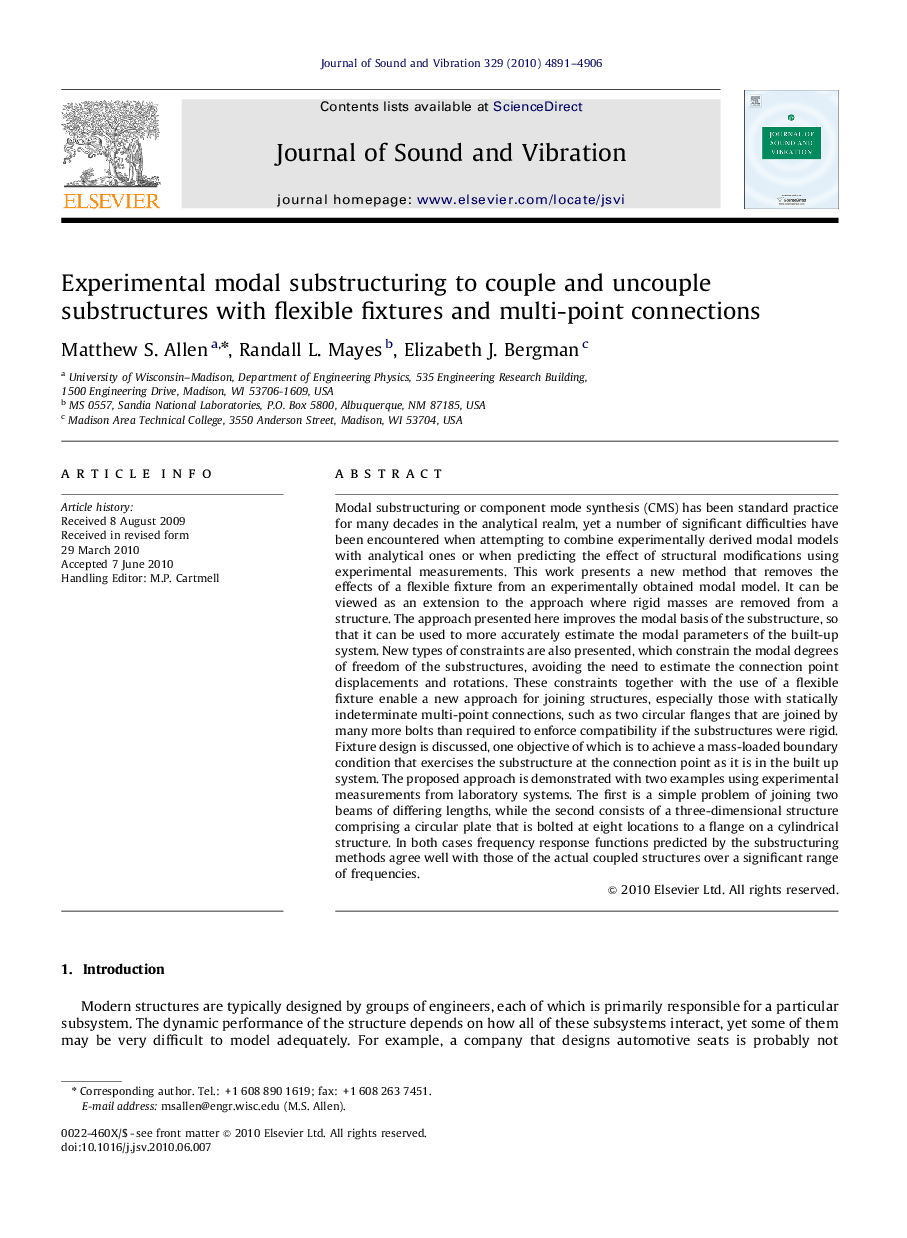| کد مقاله | کد نشریه | سال انتشار | مقاله انگلیسی | نسخه تمام متن |
|---|---|---|---|---|
| 289170 | 509666 | 2010 | 16 صفحه PDF | دانلود رایگان |

Modal substructuring or component mode synthesis (CMS) has been standard practice for many decades in the analytical realm, yet a number of significant difficulties have been encountered when attempting to combine experimentally derived modal models with analytical ones or when predicting the effect of structural modifications using experimental measurements. This work presents a new method that removes the effects of a flexible fixture from an experimentally obtained modal model. It can be viewed as an extension to the approach where rigid masses are removed from a structure. The approach presented here improves the modal basis of the substructure, so that it can be used to more accurately estimate the modal parameters of the built-up system. New types of constraints are also presented, which constrain the modal degrees of freedom of the substructures, avoiding the need to estimate the connection point displacements and rotations. These constraints together with the use of a flexible fixture enable a new approach for joining structures, especially those with statically indeterminate multi-point connections, such as two circular flanges that are joined by many more bolts than required to enforce compatibility if the substructures were rigid. Fixture design is discussed, one objective of which is to achieve a mass-loaded boundary condition that exercises the substructure at the connection point as it is in the built up system. The proposed approach is demonstrated with two examples using experimental measurements from laboratory systems. The first is a simple problem of joining two beams of differing lengths, while the second consists of a three-dimensional structure comprising a circular plate that is bolted at eight locations to a flange on a cylindrical structure. In both cases frequency response functions predicted by the substructuring methods agree well with those of the actual coupled structures over a significant range of frequencies.
Journal: Journal of Sound and Vibration - Volume 329, Issue 23, 8 November 2010, Pages 4891–4906